
 As many of you know, Patricia McKillip died recently. My little corner of the internet has been full of tributes to her, including a wonderful episode of The Coode Street Podcast featuring Ellen Kushner and E Lily Yu. This may be a surprise to younger readers as McKillip hasn’t been that active of late. As far as I’m aware, her last novel came out in 2016, though she may have produced short stories since then. Her first novel appeared in 1973, so she’s been around a long time.
As many of you know, Patricia McKillip died recently. My little corner of the internet has been full of tributes to her, including a wonderful episode of The Coode Street Podcast featuring Ellen Kushner and E Lily Yu. This may be a surprise to younger readers as McKillip hasn’t been that active of late. As far as I’m aware, her last novel came out in 2016, though she may have produced short stories since then. Her first novel appeared in 1973, so she’s been around a long time.
In terms of awards, McKillip’s career includes two World Fantasy wins, and a World Fantasy Lifetime Achievement Award. But she’s only been a Hugo finalist once, and a Nebula finalist twice. She has, however, won four Mythopoeic Awards, and has been a finalist another 11 times, which tells you a lot about the sort of fiction she wrote.
While McKillip largely eschewed series after her initial, and very successful, Riddle Master of Hed trilogy, her publishers made her works instantly recognizable because each one came with a magnificent Kinuko Craft cover. The book I’m reviewing here did not, perhaps because it was her last, and perhaps because it does not address the same fairy-tale themes as those Craft-covered books.
Kingfisher is Arthuriana. Indeed, it is the same piece of Arthuriana that Nicola Griffith mined for Spear, but it has a very different take on the legend of Percival. To start with, it is set in a modern society with cars and cell phones. While the actual location is not of this world, it seems to me very clearly based on the west coast of the USA. The small, seaside towns, with their seafood restaurants, specializing in crab dishes, remind me a lot of places like Fort Bragg. McKillip was born in Oregon, and lived there for much of her life.
Welcome, then, to the land of Wyvernhold, still ruled over by King Arden, though the 9th of that name. The world has moved on a lot since it was necessary for bold knights to hunt mythical creatures. While jousting and swordplay are still popular, these days knights prefer black leather to full plate, and they get around on motorbikes, unless they are very rich like Gareth May (Gawain) or Leith Duresse (Lancelot) and have a chauffeur-driven limousine.
In McKillip’s book, Perceval is not a young Welshman, he is a son of Lancelot. In fact Leith has two sons: Pierce and Val, but it is Pierce, the younger, who is our hero. I suspect that McKillip did this because she wanted to give Lancelot a shot at redemption, but I can’t ask her now and I doubt that she’d answer if I could.
More true to the tradition is that Pierce has grown up in obscurity, raised by his mother, the sorceress Heloise. She left court years ago, leaving Val in the care of Leith, because of Leith’s affair with Queen Genevra. But, as young proto-knights must, he chooses to leave her and seek his fortune, and his father, at court. And he does this just in time to partake in a great Quest for a mysterious object that might be a cup, a bowl, or a flowerpot. The knights can’t get much sense out of Sylvester Skelton, the king’s wizard.
That’s not Merlin, by the way. There’s a strange old man called Merle who lives in the seaside town of Chimera Bay, where the Kingfisher Inn is located. And when I say “strange”, I do mean that he has some very odd habits.
And then she saw her father, in the meadow under the soft touch of moonlight, changing into shape after shape in an intricate dance of power, or the constant folding and refolding of life in all its variations. Man became wolf became deer became hare became bear became cougar became porcupine became salmon leaping out of the water, became white heron became owl, soundless in the transfixed eye of the moon.
She, by the way, is Carrie, Merle’s daughter, who works as a cook at the Kingfisher. She has a key role in the plot.
Which brings us to cookery. Food is a major element of the story. Heloise has become a cook and runs a restaurant called Haricot in Desolation Point on far-north Cape Mistbegotten. Food is served at the Kingfisher Inn too. And then there is the mysterious Todd Stillwater, whose restaurant serves the most amazing concoctions that taste heavenly but always seen to leave diners more hungry than before.
There is much more in the book. Key to the story are the two great rivers, the Severen, and the Calluna, that intersect at Arden’s capital city of Severluna. They represent the sun god, Severen, and the moon goddess, Calluna. There is gender politics. There is some dispute as to which of these gods the thing that we must not call a Grail belongs to. And then there are the Knights of the Rising God, a group of knights who are exclusively devoted to Severen and are as thuggish and inconsiderate as any group of young, male religious fanatics.
This being a modern-day story, we have female knights, in particular Dame Scotia Malory, a descendant of the infamous writer who produced a, probably rather fanciful, biography of the original King Arden. If by now you have come to the conclusion that McKillip is just having fun writing Arthurian fanfic, you’d be dead right. But then all Arthuriana is fanfic of a sort.
There are echoes of The Tempest in the book too.
So there is love of the stories, there is gender politics, there is paganism, there is occasional comedy (often at the expense of Lancelot or Merlin), but above all there is enchantment.
Once our true realm ran from one horizon to the other, from day to night; you could move from one end to the other with a wish. A step. […] Now time gets in the way.
As our heroes will discover, there is such a thing as enchantment. You can be ensorcelled, and find that your mind is not your own. But sometimes there is worse. Sometimes you can be disenchanted.
To read a Patricia McKillip book is to be enchanted. Now that there will be no more, we are, in a way, disenchanted. Fortunately I have not read all of them. There is magic yet to come.
 Title:
Title: Kingfisher
By: Patricia McKillipPublisher: Ace
Purchase links:Amazon UKAmazon USSee
here for information about buying books though
Salon Futura

 This issue’s cover is the art that Ben Baldwin did for the new Chaz Brenchley Outremer book, Tower of the King’s Daughter. As usual, Ben has done a superb job. The book currently on pre-order and you can find the links here.
This issue’s cover is the art that Ben Baldwin did for the new Chaz Brenchley Outremer book, Tower of the King’s Daughter. As usual, Ben has done a superb job. The book currently on pre-order and you can find the links here.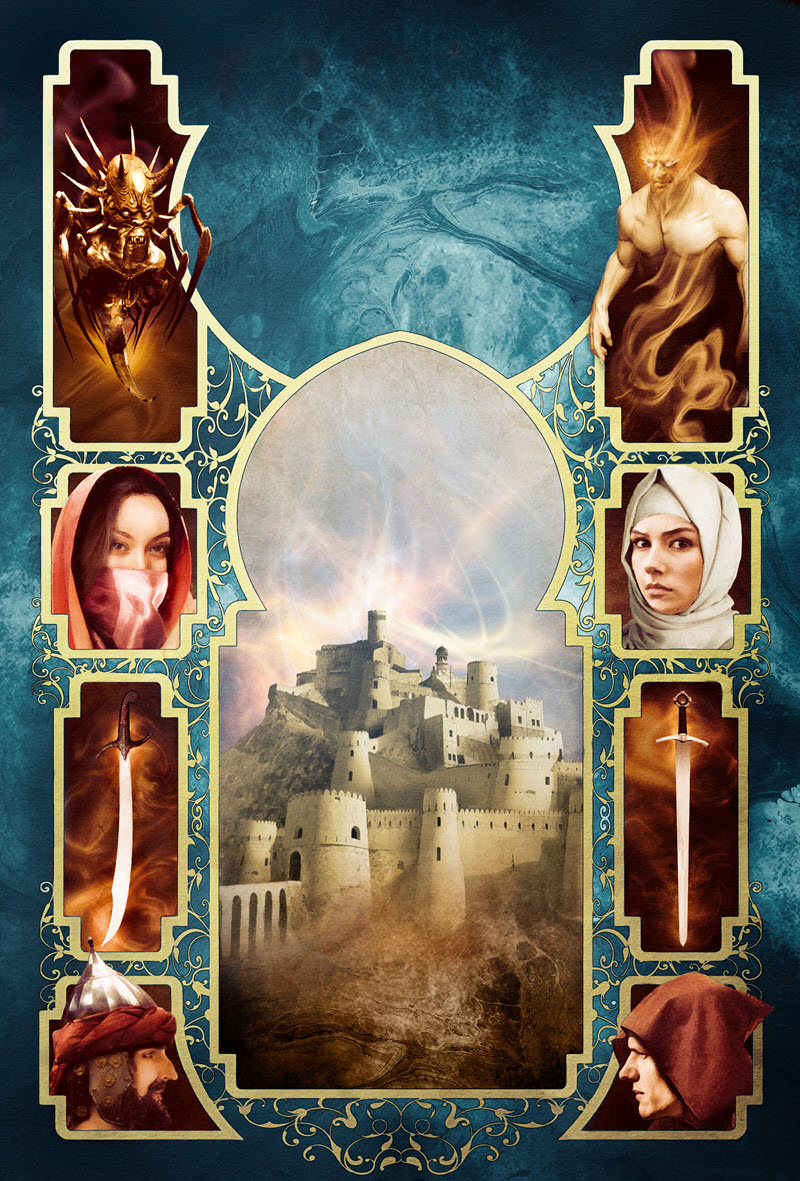

 A new Fallow Sisters novel from Liz Williams is pretty much guaranteed to have me drop everything and read it. I’m heavily invested in the series and I want to know how things will end up. Having said that, Embertide does have the feel of something that is moving the story along rather than being a thing of its own right. It is a sort of “middle book of a trilogy” thing.
A new Fallow Sisters novel from Liz Williams is pretty much guaranteed to have me drop everything and read it. I’m heavily invested in the series and I want to know how things will end up. Having said that, Embertide does have the feel of something that is moving the story along rather than being a thing of its own right. It is a sort of “middle book of a trilogy” thing.

 Every so often you read a book that has been out for ages and you think to yourself, “why haven’t I been a fan of this writer for ages?” Of course the Centenal Cycle was up for the Best Series Hugo in 2019, but that just highlights the major flaw with the category – hardly anyone has the time to read that many novels.
Every so often you read a book that has been out for ages and you think to yourself, “why haven’t I been a fan of this writer for ages?” Of course the Centenal Cycle was up for the Best Series Hugo in 2019, but that just highlights the major flaw with the category – hardly anyone has the time to read that many novels.

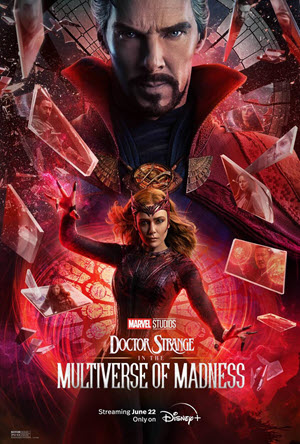 I was still fairly nervous of movie theatres when this film came out, so I didn’t go to see it. Now that it is available on disc I have taken a look. As it has been out for some time, I’m assuming that some mild spoilers are OK.I gather that the film has been widely panned, but it didn’t seem that bad to me. Obviously I know nothing about movie editing, but that’s not all there is to a film.
I was still fairly nervous of movie theatres when this film came out, so I didn’t go to see it. Now that it is available on disc I have taken a look. As it has been out for some time, I’m assuming that some mild spoilers are OK.I gather that the film has been widely panned, but it didn’t seem that bad to me. Obviously I know nothing about movie editing, but that’s not all there is to a film.
 While movie theatres might still be a bit scary, no way was I going to miss this one. I managed to find a screening with only a dozen or so other people attending and settled down to enjoy some nonsense.
While movie theatres might still be a bit scary, no way was I going to miss this one. I managed to find a screening with only a dozen or so other people attending and settled down to enjoy some nonsense.
 As with Embertide, A Prayer for the Crown-Shy feels very much like a middle book. Indeed, it may well be the middle book of a trilogy. There’s not a lot of left to learn about the world of the Monk and Robot books, and we know at some point Dex has to take Mosscap to the City to meet Important People. But for now Becky Chambers is content to develop the relationship between her two main characters.
As with Embertide, A Prayer for the Crown-Shy feels very much like a middle book. Indeed, it may well be the middle book of a trilogy. There’s not a lot of left to learn about the world of the Monk and Robot books, and we know at some point Dex has to take Mosscap to the City to meet Important People. But for now Becky Chambers is content to develop the relationship between her two main characters.

 There’s not much I can say about this convention, partly because Kevin chaired it, and partly because I didn’t attend in person. However, there are a few things worth talking about.
There’s not much I can say about this convention, partly because Kevin chaired it, and partly because I didn’t attend in person. However, there are a few things worth talking about.
 Well that was absolutely delightful.
Well that was absolutely delightful.
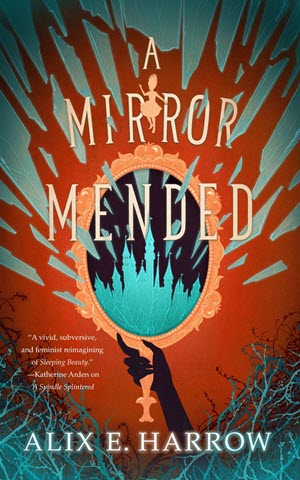 Alix Harrow’s A Spindle Splintered was one of the stand-out novellas of last year. The new book follows the same lead character, Zinna Gray, and tries to wring something else out of the idea. There are, after all, issues to be addressed. Key amongst them is the problem of “happy ever after”. As Zinnia herself points out at the start of the book, this is actually a contraction. The original traditional ending of fairy stories was that everyone was “happy in the ever after”, i.e. in Heaven. Real happy ever after doesn’t happen in the mortal world, because life happens.
Alix Harrow’s A Spindle Splintered was one of the stand-out novellas of last year. The new book follows the same lead character, Zinna Gray, and tries to wring something else out of the idea. There are, after all, issues to be addressed. Key amongst them is the problem of “happy ever after”. As Zinnia herself points out at the start of the book, this is actually a contraction. The original traditional ending of fairy stories was that everyone was “happy in the ever after”, i.e. in Heaven. Real happy ever after doesn’t happen in the mortal world, because life happens.

 It has been a long time in coming, but Finncon is back in person again. The last in-person event was 2019 in Jyväskylä (where I was a Guest of Honour). We’ve all missed it. So how is the convention shaping up to the post-lockdown era?
It has been a long time in coming, but Finncon is back in person again. The last in-person event was 2019 in Jyväskylä (where I was a Guest of Honour). We’ve all missed it. So how is the convention shaping up to the post-lockdown era?
 A provisional agenda for this year’s WSFS Business Meeting has been released. You can find it
A provisional agenda for this year’s WSFS Business Meeting has been released. You can find it 

 This is the June 2022 issue of Salon Futura. Here are the contents.
This is the June 2022 issue of Salon Futura. Here are the contents. All the Seas of the World
All the Seas of the World Wrath Goddess Sing
Wrath Goddess Sing Of Charms, Ghosts and Grievances
Of Charms, Ghosts and Grievances On Reviewing and Taxonomies
On Reviewing and Taxonomies The Matrix Resurrections
The Matrix Resurrections Doctor Who Redacted
Doctor Who Redacted Across the Green Grass Fields
Across the Green Grass Fields The Mab
The Mab Moon Knight
Moon Knight Editorial – June 2022
Editorial – June 2022 This month’s cover is by
This month’s cover is by 
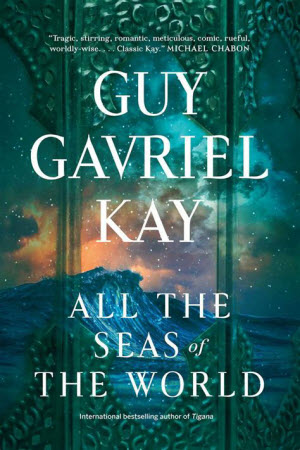 There are not many authors for whom I can say, “anything they write I will buy and read immediately.” Some authors that I am a huge fan of don’t always produce the sort of books I want to read. That’s because they have a fairly wide range of authorly interests. Other authors are much more predictable. That’s definitely the case with Guy Gavriel Kay. I know what sort of book I will get from him, and I know I will love it.
There are not many authors for whom I can say, “anything they write I will buy and read immediately.” Some authors that I am a huge fan of don’t always produce the sort of books I want to read. That’s because they have a fairly wide range of authorly interests. Other authors are much more predictable. That’s definitely the case with Guy Gavriel Kay. I know what sort of book I will get from him, and I know I will love it.
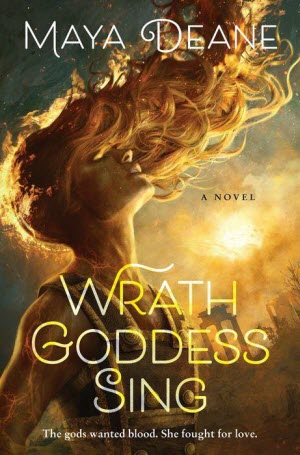 There are some writers who are so good at what they do that I would give an awful lot to be able to write like them. (Guy Kay is one of them. Cat Valente, obviously, is another.) But I wouldn’t necessarily write the sort of books that they write. Wrath Goddess Sing by Maya Deane is the sort of book that I wish I could have written, and would have written if I had been good enough and brave enough.
There are some writers who are so good at what they do that I would give an awful lot to be able to write like them. (Guy Kay is one of them. Cat Valente, obviously, is another.) But I wouldn’t necessarily write the sort of books that they write. Wrath Goddess Sing by Maya Deane is the sort of book that I wish I could have written, and would have written if I had been good enough and brave enough.

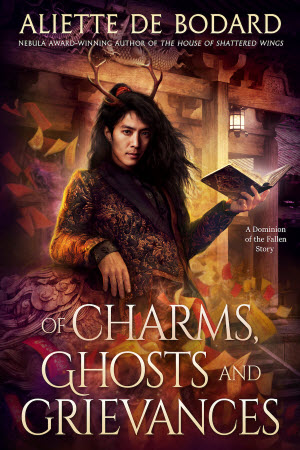 I was talking elsewhere about authors whose books I buy and read as soon as they came out. Aliette de Bodard has made her way into those ranks. With a full time job, and raising two kids on her own, she’s mostly producing short fiction these days, but it is glorious stuff.
I was talking elsewhere about authors whose books I buy and read as soon as they came out. Aliette de Bodard has made her way into those ranks. With a full time job, and raising two kids on her own, she’s mostly producing short fiction these days, but it is glorious stuff.
 Back in February, Paul Kincaid published
Back in February, Paul Kincaid published 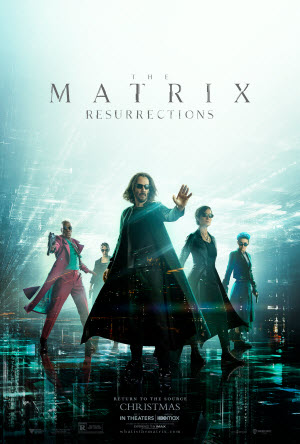 The fourth Matrix film was apparently a disaster at the box office, and received a thorough panning from many critics. As a result it took me a while to get around to watching it, but I’m glad I did because there’s a lot to think about.
The fourth Matrix film was apparently a disaster at the box office, and received a thorough panning from many critics. As a result it took me a while to get around to watching it, but I’m glad I did because there’s a lot to think about. I’m not a big fan of audio drama. I tend to have difficulty in following what is going on. I’m also not a huge fan of Doctor Who. In particular I found the Moffat era unwatchable. But my Twitter feed has been full of excitement over a Doctor Who audio drama with a lot of queer content, so I figured I should give it is a try. Folks, it is very good. It is also guaranteed to get up the noses of the Dudebros. This is excellent.
I’m not a big fan of audio drama. I tend to have difficulty in following what is going on. I’m also not a huge fan of Doctor Who. In particular I found the Moffat era unwatchable. But my Twitter feed has been full of excitement over a Doctor Who audio drama with a lot of queer content, so I figured I should give it is a try. Folks, it is very good. It is also guaranteed to get up the noses of the Dudebros. This is excellent. Another piece of Hugo reading done. This is the one novella from this year’s ballot that I hadn’t read. It is, of course, another book in Seanan McGuire’s Wayward Children series. This one is not set in Eleanor West’s school, and it works pretty well as a stand-alone.
Another piece of Hugo reading done. This is the one novella from this year’s ballot that I hadn’t read. It is, of course, another book in Seanan McGuire’s Wayward Children series. This one is not set in Eleanor West’s school, and it works pretty well as a stand-alone.

 Most of you will probably have heard of The Mabinogion. For those who haven’t, it is a compilation of mythological tales written in Middle Welsh. Some of the stories feature King Arthur. Lloyd Alexander’s The Chronicles of Prydain series is loosely based on some of the tales in The Mabinogion.
Most of you will probably have heard of The Mabinogion. For those who haven’t, it is a compilation of mythological tales written in Middle Welsh. Some of the stories feature King Arthur. Lloyd Alexander’s The Chronicles of Prydain series is loosely based on some of the tales in The Mabinogion.
 I was hoping to have some expert Egyptological input before writing this, but I can’t wait too long or I will have forgotten what I saw, so here goes with the weird guy in mummy bandages.
I was hoping to have some expert Egyptological input before writing this, but I can’t wait too long or I will have forgotten what I saw, so here goes with the weird guy in mummy bandages.
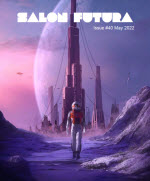 This is the May 2022 issue of Salon Futura. Here are the contents.
This is the May 2022 issue of Salon Futura. Here are the contents. Kingfisher
Kingfisher Aspects
Aspects Plutoshine
Plutoshine Dreams Bigger Than Heartbreak
Dreams Bigger Than Heartbreak Kundo Wakes Up
Kundo Wakes Up Åcon XI
Åcon XI Star Trek: Prodigy
Star Trek: Prodigy Picard – Season 2
Picard – Season 2 This issue’s cover is again from
This issue’s cover is again from 
 As many of you know, Patricia McKillip died recently. My little corner of the internet has been full of tributes to her, including a
As many of you know, Patricia McKillip died recently. My little corner of the internet has been full of tributes to her, including a 
 Most of you will, I suspect, know that this book is unfinished. What I hadn’t quite twigged before starting it, is that it is not just an unfinished novel, it is an unfinished fantasy series. No one knows how many books John M Ford had planned before his untimely death in 2006, but it was clearly more than one.
Most of you will, I suspect, know that this book is unfinished. What I hadn’t quite twigged before starting it, is that it is not just an unfinished novel, it is an unfinished fantasy series. No one knows how many books John M Ford had planned before his untimely death in 2006, but it was clearly more than one.
 Last month I featured a review of a debut novel from a woman writer fresh out of university that I found very impressive. Now I have another one, equally impressive, but very different.
Last month I featured a review of a debut novel from a woman writer fresh out of university that I found very impressive. Now I have another one, equally impressive, but very different.
 I don’t read a lot of YA, but I’d be happy to bet that Charlie Jane Anders’ Unstoppable series is not typical. It is not just about teenagers. It is about mostly queer teenagers.
I don’t read a lot of YA, but I’d be happy to bet that Charlie Jane Anders’ Unstoppable series is not typical. It is not just about teenagers. It is about mostly queer teenagers.
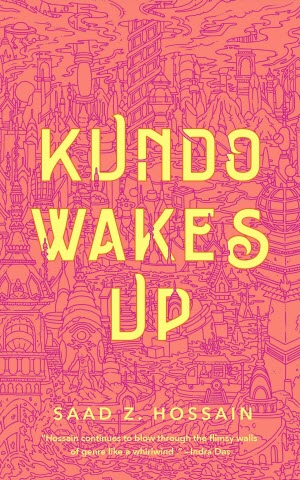 Kundo Wakes Up is the latest in a series of books, mostly novellas, by Saad Z Hossain, who is fast becoming one of my favourite writers. They are essentially cyberpunk, but set in a near future South Asia which manages to be a much better setting for such tales than Seattle. They also have djinn. Everything is better with djinn, it seems.
Kundo Wakes Up is the latest in a series of books, mostly novellas, by Saad Z Hossain, who is fast becoming one of my favourite writers. They are essentially cyberpunk, but set in a near future South Asia which manages to be a much better setting for such tales than Seattle. They also have djinn. Everything is better with djinn, it seems.
 It has been a long time. The last Åcon was in 2019. But finally Nordic fandom has been able to gather in Mariehamn once more, joined as usual by a few folks from further afield.
It has been a long time. The last Åcon was in 2019. But finally Nordic fandom has been able to gather in Mariehamn once more, joined as usual by a few folks from further afield. We don’t yet have Paramount + here in the UK, and anyway I’m ambivalent about paying for a streaming service just to watch Star Trek. I can’t think of anything else they offer that I’d want to watch. So I’d kind of resigned myself to not seeing Prodigy. But then I discovered that it is on Nickleodeon, and I have that channel as part of my Sky subscription, so I promptly binged the first season.
We don’t yet have Paramount + here in the UK, and anyway I’m ambivalent about paying for a streaming service just to watch Star Trek. I can’t think of anything else they offer that I’d want to watch. So I’d kind of resigned myself to not seeing Prodigy. But then I discovered that it is on Nickleodeon, and I have that channel as part of my Sky subscription, so I promptly binged the first season. Jean Luc Picard has many, many loyal fans, and Paramount seems determined to milk them for all they are worth. This means re-visiting themes from the original Next Generation series. In the first season of Picard, that meant Data and related artificial beings. In this one it means mainly the Borg, whom we are supposed to have got rid of, and Q, whom sadly we haven’t.
Jean Luc Picard has many, many loyal fans, and Paramount seems determined to milk them for all they are worth. This means re-visiting themes from the original Next Generation series. In the first season of Picard, that meant Data and related artificial beings. In this one it means mainly the Borg, whom we are supposed to have got rid of, and Q, whom sadly we haven’t.
 This is the April 2022 issue of Salon Futura. Here are the contents.
This is the April 2022 issue of Salon Futura. Here are the contents. A Psalm for the Wild-Built
A Psalm for the Wild-Built Bluebird
Bluebird StarHenge
StarHenge Midnight Doorways
Midnight Doorways The White Room
The White Room Rosebud
Rosebud Eastercon 2022
Eastercon 2022 Spiderman – No Way Home
Spiderman – No Way Home Story Matrices
Story Matrices Star Trek: Discovery – Season 4
Star Trek: Discovery – Season 4 This issue’s cover uses a piece of art that Liam Sharp has been using to promote his StarHenge comic. It shows a Mor-Dreadnaught of The Cast, who are the villains of the story. I cheekily asked Liam if he’d mind me using it, and he said yes. Huge thanks are appropriate. An undulterated version of the art is available below.
This issue’s cover uses a piece of art that Liam Sharp has been using to promote his StarHenge comic. It shows a Mor-Dreadnaught of The Cast, who are the villains of the story. I cheekily asked Liam if he’d mind me using it, and he said yes. Huge thanks are appropriate. An undulterated version of the art is available below.
 It is Hugo reading time, and that means catching up with Becky Chambers. It is easy to see why she is so popular. Her prose is effortlessly readable and deeply caring. But this can mask the amount of thought that she puts into her work.
It is Hugo reading time, and that means catching up with Becky Chambers. It is easy to see why she is so popular. Her prose is effortlessly readable and deeply caring. But this can mask the amount of thought that she puts into her work.
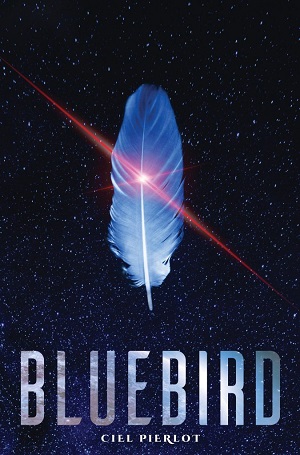 Did someone say, “lesbian space pirate”? I’m in.
Did someone say, “lesbian space pirate”? I’m in.
 Sometimes in this business you meet someone and can see immediately that they have huge amounts of talent and are going to do very well for themselves. In my case one such person was Liam Sharp. I could see that he had a fine career as an artist in front of him, and I was right. He’s currently having a bumper year. He’s had a hugely successful Kickstarter campaign for an art book, and now he is starting that holy grail of all comics people, a creator-owned title.
Sometimes in this business you meet someone and can see immediately that they have huge amounts of talent and are going to do very well for themselves. In my case one such person was Liam Sharp. I could see that he had a fine career as an artist in front of him, and I was right. He’s currently having a bumper year. He’s had a hugely successful Kickstarter campaign for an art book, and now he is starting that holy grail of all comics people, a creator-owned title.